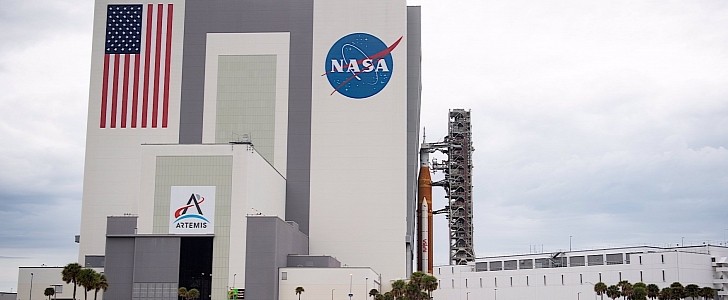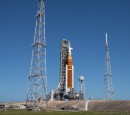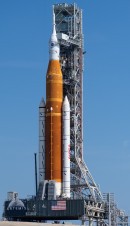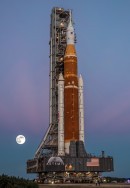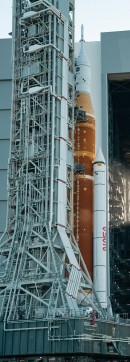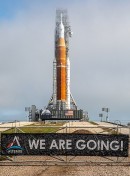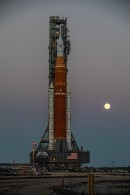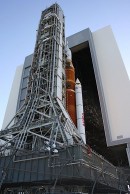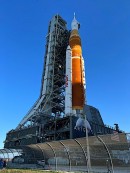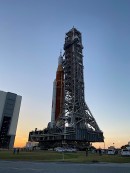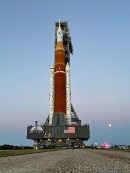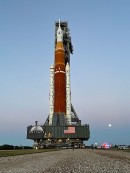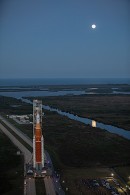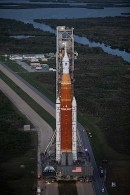At the time of writing, hurricane Ian is hurtling toward Florida, and it could be a category 4 storm by the time it reaches it. That means winds of up to 156 mph (251 kph) and the potential of making a mess of the place.
The Kennedy Space Center is in the path of the storm, and NASA has already decided to close the visitor complex on September 28 and September 29. Further away in the complex, launch pad 39B was cleared of its occupants to keep them safe from potential damage.
Those occupants were the Space Launch System (SLS) rocket and Orion capsule, which were both transported back to the Vehicle Assembly Building (VAB) for shelter. For a brief moment though, it seemed it was more dangerous to be inside the VAB than outside.
According to a NASA statement, fire alarms rang inside the building on September 27, soon after the SLS reached the location. The alarm was caused by smoke being detected in the High Bay 3, where the SLS is.
After a quick investigation, NASA technicians found “an arc flash event occurred at a connector on an electrical panel in High Bay 3.” A spark from that arc landed on a rope marking the boundary of the work area on the third floor of F-tower, causing the rope to smolder.
The alarm was triggered by the workers there, and the building was quickly evacuated. Luckily, the smoke did not turn into a fire, and all safety measures were taken to remove the threat.
NASA says no one was injured as a result of the incident, and work resumed shortly after. Also, the SLS and its mobile launcher were not affected in any way.
As for when the SLS will kickstart the Artemis program, that’s anyone’s guess. We should have seen the thing lift off today, but Ian had other plans.
Those occupants were the Space Launch System (SLS) rocket and Orion capsule, which were both transported back to the Vehicle Assembly Building (VAB) for shelter. For a brief moment though, it seemed it was more dangerous to be inside the VAB than outside.
According to a NASA statement, fire alarms rang inside the building on September 27, soon after the SLS reached the location. The alarm was caused by smoke being detected in the High Bay 3, where the SLS is.
After a quick investigation, NASA technicians found “an arc flash event occurred at a connector on an electrical panel in High Bay 3.” A spark from that arc landed on a rope marking the boundary of the work area on the third floor of F-tower, causing the rope to smolder.
The alarm was triggered by the workers there, and the building was quickly evacuated. Luckily, the smoke did not turn into a fire, and all safety measures were taken to remove the threat.
NASA says no one was injured as a result of the incident, and work resumed shortly after. Also, the SLS and its mobile launcher were not affected in any way.
As for when the SLS will kickstart the Artemis program, that’s anyone’s guess. We should have seen the thing lift off today, but Ian had other plans.
